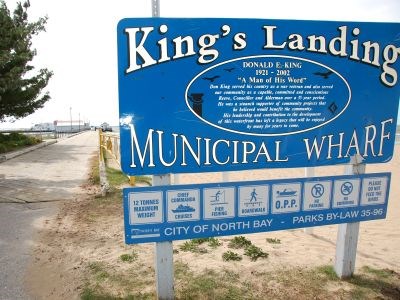A North Bay waterfront landmark is undergoing the microscope.
The future of the aging King’s Wharf Landing is under scrutiny as divers conducted an underwater inspection of the former government dock in August before a report goes to city council in October on its condition.
Over the summer, the federal and provincial contributed a combined $675,000 toward an engineering study and environmental assessment of the wharf and breakwater.
North Bay city council will decide sometime in mid-2016 whether to repair it, demolish it, or build an entirely new dock with space for more recreational amenities.
The dock was originally built in 1947 and was transferred from federal control over the city in 1997.
The 380-metre-long structure, which reaches out into Lake Nipissing, includes a 177-metre approach causeway used by vehicles and pedestrians to queue up for the Chief Commanda II cruise ship.
The L-shaped wood structure consists of a main wharf with an inner and outer pier, and a stone breakwater.
King’s Landing is a key to a proposed waterfront makeover being considered, including a possible new dock facility for the cruise ship.
The closer examination of the wharf is being done in tandem with a waterfront and urban land-use study to identify more tourism and retail-commercial opportunities.
Previous inspections revealed that the steel pilings and stone breakwater are in good shape, but the wooden wharf itself is in poor condition and is at the end of its serviceable life.
“The environmental assessment (EA) will give us a better feel on which direction we should go in,” said John Severino, the city’s managing director of community services, in being able to formalize a more detailed design for a new multi-use pier.
The EA will give city staff a better idea of what can be done at the site, said Severino, taking into account possible environmental constraints such as the impact on habitat and shoreline issues.
“We don’t exactly know what we’re going to do because we don’t have that environmental assessment,” he said, which should take six to nine months to complete. “There are a dozen things that we have to assess on what we’re going to do. Once we know, we can move forward with a detailed design.”
A more detailed engineering study will provide council with “some crystalized options” and costs on how to move the waterfront redevelopment forward in staged phases.
The waterfront commercial attraction study last year suggested establishing a coffee shop-restaurant, recreational watercraft and bike rentals, an artisans retail outlet, an improved cruise ship operation, better beach and marina washrooms and showers, fishing charters, splash pad and skateboard park, among other things.




